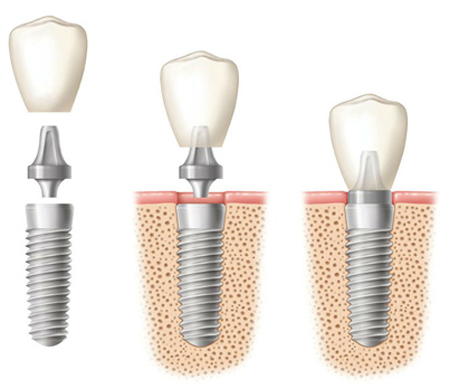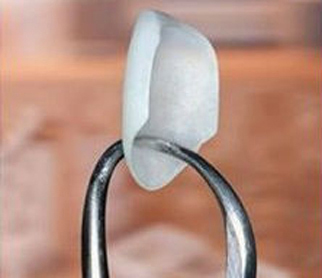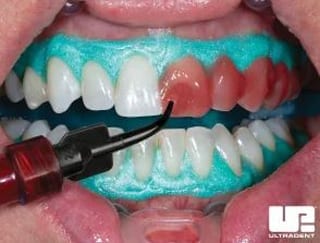Are My Dental Crowns Too Short?
crowns. The implant crowns are on my top left first and second molars, but they do not touch the bottom first and second molars when I bite down. My dentist checked my bite when he placed the crown, and he knows the teeth do not meet. I thought that top and bottom teeth should slightly meet when you bite down or chew. Are my implant crowns too short? – Thank you. Cecilia from Detroit
Cecilia,
Dr. Goebel would need to examine your teeth and implant crowns to determine whether the crowns are too short or if another issue is affecting your bite. But yes, your upper and lower teeth should touch when you bite down or chew. To achieve a proper bite, a dentist needs advanced training in occlusion (how your teeth come together).
Should Your Upper and Lower Teeth Touch?
Your upper and lower teeth should touch when your mouth is closed and when you bite down for several reasons:
- Jaw function – When you clench your teeth together, all your teeth will meet at the same time if your bite is aligned correctly.
- Sliding function – When you move your teeth from one side to another, either only your canine teeth should touch, or all your back teeth should touch evenly.
Without proper occlusion (how your teeth meet), your teeth may move over time and become crowded. Also, a misaligned bite can cause jaw and neck pain, headaches, and ringing in our ears.

Some dentists check your bite with this method:
- Put a 0.05 mm thin strip of plastic between your teeth
- Ask you to clench your teeth together
- Pull the strip to see if your teeth can hold it or if it is easy to release
If your teeth meet correctly, they will hold onto the strip.
Ask your dentist to recheck your bite to ensure your implant crowns fit well. If your dentist cannot resolve the issue, schedule a consultation with a dentist with advanced training in occlusion and bite.
Cosmetic dentist Thomas J. Goebel, DDS of Moline, Illinois, sponsors this post.
Brown spots on my teeth and whitening makes them worse
Since childhood, I’ve had brown spots on six front teeth. I was told that the discoloration came from illness and frequent fever as a child. My dentist has tried whitening my teeth with different products. Although my teeth are whiter, the discoloration looks darker than ever. My dentist says that he may be able to grind away the discoloration and put composite over it. The process sounds painful. And my dentist doesn’t sound as if he knows that it will work. I am 33 years old and finally stable enough to get this done right without being my dentist’s guinea pig. Is grinding off the stains the only option? – Thank you. Ksenia from Chicago
Ksenia,
You are wise to be cautious about letting your dentist try to remove or reduce the brown spots on your teeth. Your dentist’s attempt to improve your teeth with bleaching shows that he does not understand how to predict the results of whatever treatment he uses.
What Causes Brown Spots on Teeth?
Brown spots on teeth can result from a variety of conditions—some medical and some external. Some causes of brown tooth stains include:
- Excessive intake of fluoride (fluorosis stains)
- High fever during childhood while teeth are developing
- Taking the antibiotic tetracycline while teeth are developing
- Tobacco products
- Tooth decay
- Trauma
- Untreated decalcification around braces
Will Teeth Whitening Remove Brown Spots?
Teeth whitening will not remove embedded brown spots caused by fluorosis, tetracycline, fever during childhood, and other factors.
Microabrasion for Brown Spots on Teeth
Microabrasion is a process that uses hydrochloric acid and pumice to gently remove a small about of tooth enamel. If the brown spots on your teeth are not deeply embedded, microabrasion might work.
Severe Brown Spots on Teeth
When brown spots on your teeth are severe, a cosmetic dentist can conceal them with dental bonding or porcelain veneers.
Dental Bonding for Brown Spots on Teeth
Dental bonding can conceal brown spots if a skilled cosmetic dentist does it. The dentist will take these steps:
- Clean and dry your teeth
- Roughen the surface
- Lightly etch your teeth
- Blend dental composite to perfectly match your natural tooth shade
- Apply and sculpt the composite
- Harden and polish it
Porcelain Veneers for Brown Spots on Teeth

Porcelain veneers will conceal brown spots on teeth. Although they are more expensive than dental bonding, they last longer. Veneers can last up to 20 years, but bonding must be renewed every three to five years—if not sooner.
A cosmetic dentist takes these steps for veneers:
- Talks to you about your preferences for tooth shape, size, and color
- Prepares your teeth by removing less than one millimeter of tooth enamel
- Takes impressions of your teeth
- Give you temporary veneers to wear before you approve the look and feel
- Sends your case to a ceramist to make your porcelain veneers
- Bonds the veneers on after you approve the look and feel
A dentist must have advanced cosmetic dentistry training to achieve natural-looking results with composite or veneers. Your cosmetic dentist must:
- Conceal the brown spots
- Maintain translucence in the bonding or porcelain veneers
- Perfectly match the bonding or veneers with the surrounding teeth
We recommend looking for a cosmetic dentist and scheduling a consultation to examine your teeth and explain your treatment options. Verify the dentist’s credentials before agreeing to treatment. Read our post, Her porcelain veneers keep falling off, but are they really veneers?, to understand why you must be cautious.
Dr. Thomas J. Goebel, a cosmetic dentist in Moline, IL, sponsors this post. Visit his smile gallery to see before-and-after patient photos.
Why would I need veneers, Invisalign, and teeth whitening?
I moved to the area in 2019, and I have seen two dentists. Neither of them impressed me enough to become a regular patient. In January, I received a postcard from a dentist whose office is between my job and home. I gave her a try because I am interested in porcelain veneers. She talked briefly about veneers but said she would first whiten my teeth with Zoom, recommend Invisalign, and finally finish my teeth off with veneers. I did not ask for teeth whitening or Invisalign. Then she said something about reducing the cost by $500 if I agreed to all the services. Are all those treatments necessary? Porcelain veneers alone cost enough! Or are dentists selling package deals now? I feel like I should be disgusted about an attempt to upsell and trick me. – Thank you. Teal from Ohio
Teal,
Thank you for your inquiry. We understand why you feel that your dental visit was cluttered with sales talk.
Teeth Whitening Before Veneers
A cosmetic dentist might recommend bleaching your teeth before placing veneers for these reasons:
- Porcelain is colorfast – It is impossible to whiten porcelain veneers, so whitening must be completed first if you want to brighten your smile.
- A ceramist makes veneers match your tooth color – A cosmetic dentist takes pictures of your teeth and gives a ceramist instructions to create veneers that match your tooth shade. If you whiten your teeth after receiving your veneers, your teeth will be whiter than the veneers.
Bleaching is not a requirement – But whitening your teeth with Zoom or any other whitening system is not required to receive veneers, and neither is Invisalign a requirement.
Invisalign, Porcelain Veneers, or Both?

Depending on the alignment of your teeth, orthodontic treatment may provide better results than porcelain veneers, but you did not mention why your dentist recommends Invisalign. Cosmetic dentists often use porcelain veneers to make slightly crooked teeth look perfectly straight. And they do it without Invisalign.
Schedule a Cosmetic Dentistry Consultation
Without Dr. Goebel examining your teeth, we will not speculate about the reasons for the dentist’s recommendations. So we suggest that you schedule a consultation with a dentist who has advanced cosmetic dentistry training. Talk with the dentist about each issue that concerns you. He or she will explain your treatment options and the results you can expect. No dentist should pressure you to receive treatment of any kind.
Thomas J. Goebel, DDS of Moline, IL, sponsors this post.
